Most mid-size business leaders know the frustration of IT that doesn’t keep up: projects that take twice as long and cost twice as much as promised, an endless stream of support tickets, growing cybersecurity risks and software licenses that go underused.
It’s rarely because the IT team isn’t trying. The core problem is a lack of strategy. Without a plan tied to business goals, IT becomes a cycle of firefighting and reacting—technology starts to hold the company back instead of driving it forward. That’s why an IT strategy aligned with your business plan is essential.
The reality for many companies with $20–200 million in revenue is one of two common models:
– An overworked internal IT manager or small team
– An outsourced provider that functions mainly as a help desk with basic monitoring
Both models tend to wait until something breaks and then fix it. That “fix as you go” approach can seem efficient in the short term, but it produces hidden costs and missed opportunities that compound over time.
Symptoms of IT Without Strategy
When IT isn’t guided by a business-aligned plan, problems multiply and create a constant state of stress, wasted money and frustration:
– Constant firefighting: Teams spend their days troubleshooting email, patching servers and resetting passwords instead of pursuing forward-looking initiatives.
– Escalating costs: IT budgets grow but executives can’t see improvements tied to business performance—technology feels like a money pit.
– Stalled projects: ERP upgrades, CRM integrations and cloud migrations stall or fail when they lose sponsorship and alignment with business priorities.
– Security gaps: Cybersecurity is often an afterthought rather than integrated into strategy, leaving businesses exposed to breaches and compliance failures.
– Missed opportunities: Companies lose bids, fail to scale production or miss regulatory requirements because their IT can’t support strategic moves.
Hidden Costs of Reactive IT
Viewing IT simply as a cost center overlooks the real damage caused by a reactive approach:
– Downtime: When core applications go down, employees sit idle, client satisfaction suffers and revenue can be lost.
– Reduced productivity: Slow systems and manual workarounds erode morale and efficiency, making it harder to retain top talent.
– Reputation risk: Breaches and compliance failures damage trust and can take years to repair.
– Opportunity cost: Hours spent fixing issues are hours not spent on innovation, growth or customer service—letting better-prepared competitors seize market share.
Mid-Size Companies Are Especially Vulnerable
Small firms may absorb some risk through agility, and large enterprises have CIOs and departments to build strategy. Mid-size companies, however, are in a danger zone: large enough to be targeted by cybercriminals and subject to regulation, but often without the executive IT leadership and frameworks needed to operate securely and at scale.
The Executive’s Dilemma
As a C-level leader, you must ensure that every dollar spent supports the business plan. You want IT to deliver scalability, security and measurable returns—not just uptime. Yet without strategic alignment, IT becomes a black box. You’re left asking:
– Are we investing in the right technologies?
– Are we secure enough to avoid becoming a headline?
– Why do projects never finish?
– Is IT supporting growth or holding us back?
Reframing IT as a Business Function
The first step is to stop treating IT as merely a technical utility and start treating it as a business function—one that must be strategically aligned to company goals. Many of Cytranet’s clients arrive having outgrown the help-desk model but without the executive-level IT capability to connect technology to strategy.
At Cytranet, we combine Fractional CIO leadership, proactive IT management and cybersecurity standards to give mid-size companies the IT strategy they need. This approach aligns technology with your business objectives and puts you back in control.
Request a consultation with Cytranet to learn how to move from reactive IT to a strategic, business-aligned technology function. Check our next blog for the business case for aligning IT with your strategic plan.


